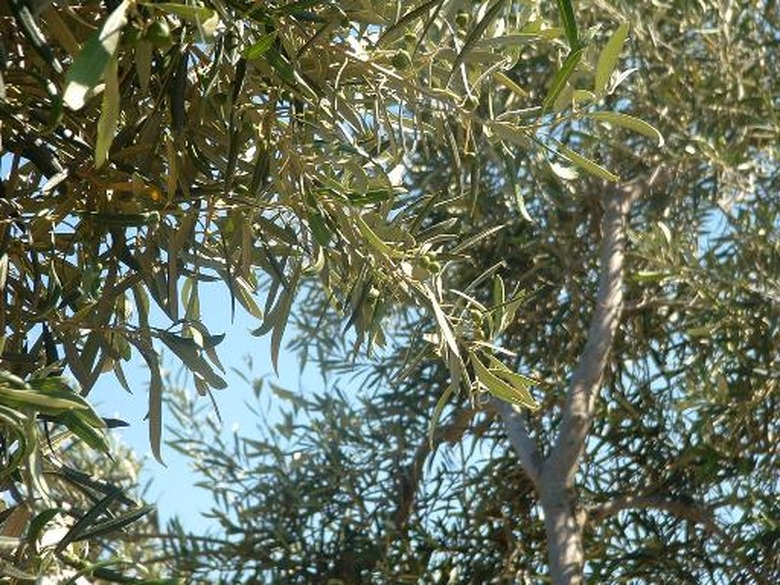When To Harvest Olive
Things Needed
- Rakes
- Tarps
- Mechanical harvesting equipment, optional
Olives are grown for eating and for production of olive oil. Olives can be harvested at any point from green immature fruit to fully ripened. When the olives should be harvested depends on what the olives will be used for and the flavor desired. Olives for eating are handpicked to avoid bruising. Olives for oil production can be harvested mechanically or with hand rakes. All olives need to be processed immediately after picking.
Choosing a Time to Harvest
Step 1
Harvest olives from late August through November, depending on your location and desired ripeness.
- Olives are grown for eating and for production of olive oil.
- Olives for eating are handpicked to avoid bruising.
Step 2
Determine the flavor profile you desire. Olives can be picked at any point from green to completely ripe; the flavor will vary at each point. The earlier you harvest olives, the more bitter they will taste. Olives become more mild in flavor as they mature.
Step 3
Choose a time to harvest when you can devote all of your time and attention to the harvest. Reserve equipment for milling or curing your olives immediately after harvest, as flavor degrades with time.
Step 4
Line up friends and relatives to help with the harvest. The harvest needs to be accomplished quickly and completely, especially if you are processing your olives for oil. Harvesting olives requires many hands.
- Determine the flavor profile you desire.
- Reserve equipment for milling or curing your olives immediately after harvest, as flavor degrades with time.
Step 5
Monitor the weather. Wet, rainy weather will spoil the olives before they can be processed.
Harvesting for Oil
Step 1
Schedule the olive harvest as soon as the fruit reaches maximum size. Larger olives will have more oil, but oil yield drops as the olives ripen. Oil from green fruit has a longer shelf life, but it may be bitter and require several months to mellow the flavor.
Step 2
Gather tarps and rakes for each person to use in harvesting. Place tarps under the trees and rake through the branches to dislodge the olives. Gather the olives from the tarps. Tree shakers and mechanical rakes can also be used when harvesting olives for oil.
- Wet, rainy weather will spoil the olives before they can be processed.
- Place tarps under the trees and rake through the branches to dislodge the olives.
Step 3
Pick olives later for a more mellow oil with a light yellow color. Oil from olives harvested later has a shorter shelf life.
Step 4
Harvest all of the olives when the majority of the olives have reached the desired stage of ripeness. Pick each tree clean and remove any olives from the ground. Olives left on the ground will rot and promote disease.
Olives for Brining
Step 1
Handpick olives for brining to avoid bruising that rakes can cause. This method is more time-consuming but can be spread out to produce different batches of olives.
- Pick olives later for a more mellow oil with a light yellow color.
- Handpick olives for brining to avoid bruising that rakes can cause.
Step 2
Pick green olives for brine curing when olives are mature but before they begin to change color. Continue picking for brine curing as the olives ripen.
Step 3
Handpick olives for Greek-style curing when the olives are mature and have turned dark-red to purple. They will turn black after curing. Smaller varieties of olives are best for Greek-style olives.
